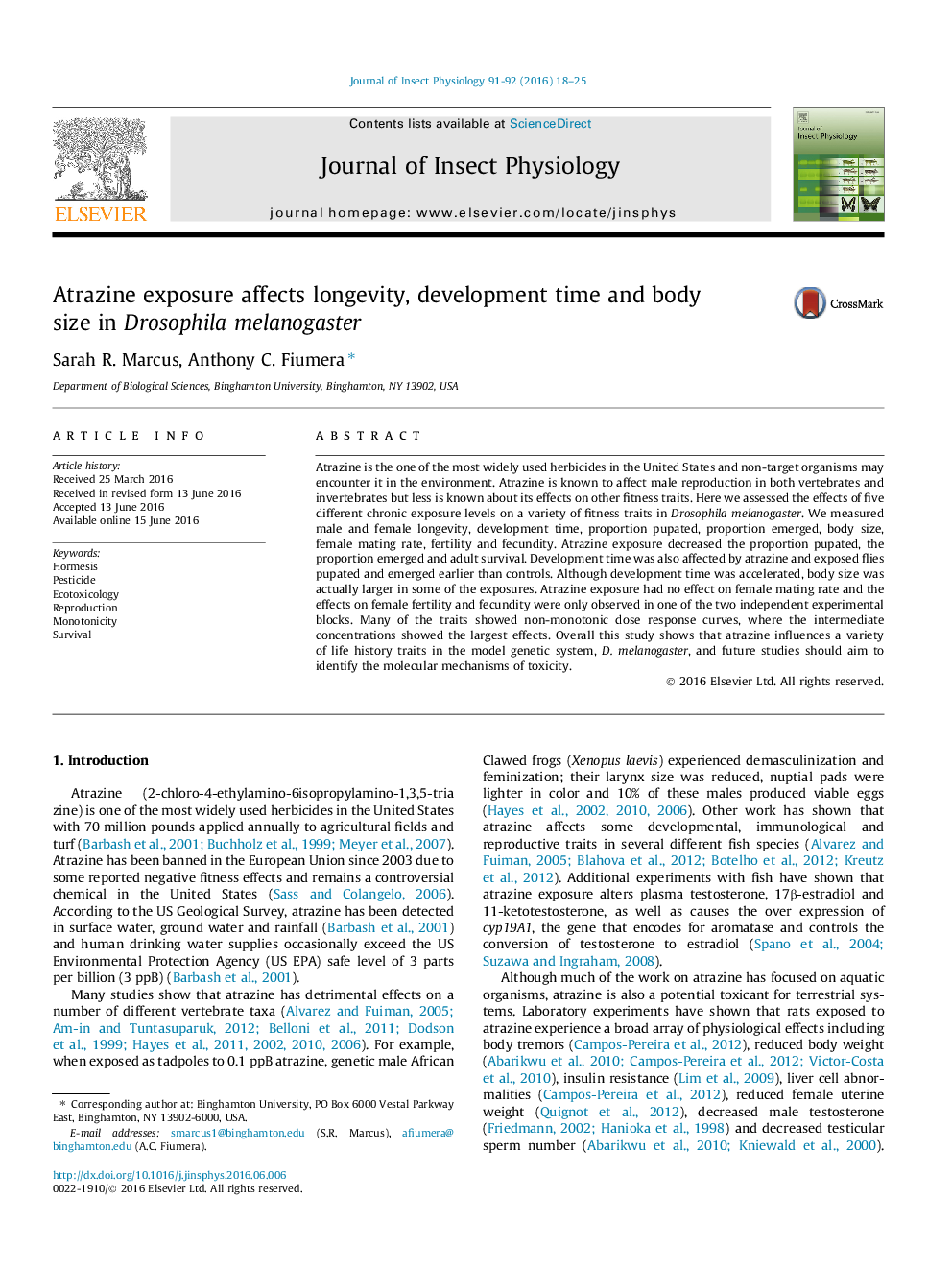| کد مقاله | کد نشریه | سال انتشار | مقاله انگلیسی | نسخه تمام متن |
|---|---|---|---|---|
| 2840266 | 1570979 | 2016 | 8 صفحه PDF | دانلود رایگان |

• Atrazine exposure affects a number of fitness traits in Drosophila melanogaster.
• Atrazine exposure reduced pupation rate, emergence rate and adult longevity.
• Atrazine exposure accelerated development time and affected body size.
• Most traits showed non-monotonic dose response curves.
Atrazine is the one of the most widely used herbicides in the United States and non-target organisms may encounter it in the environment. Atrazine is known to affect male reproduction in both vertebrates and invertebrates but less is known about its effects on other fitness traits. Here we assessed the effects of five different chronic exposure levels on a variety of fitness traits in Drosophila melanogaster. We measured male and female longevity, development time, proportion pupated, proportion emerged, body size, female mating rate, fertility and fecundity. Atrazine exposure decreased the proportion pupated, the proportion emerged and adult survival. Development time was also affected by atrazine and exposed flies pupated and emerged earlier than controls. Although development time was accelerated, body size was actually larger in some of the exposures. Atrazine exposure had no effect on female mating rate and the effects on female fertility and fecundity were only observed in one of the two independent experimental blocks. Many of the traits showed non-monotonic dose response curves, where the intermediate concentrations showed the largest effects. Overall this study shows that atrazine influences a variety of life history traits in the model genetic system, D. melanogaster, and future studies should aim to identify the molecular mechanisms of toxicity.
Figure optionsDownload as PowerPoint slide
Journal: Journal of Insect Physiology - Volumes 91–92, August–September 2016, Pages 18–25